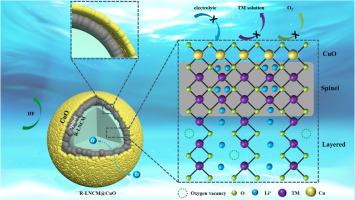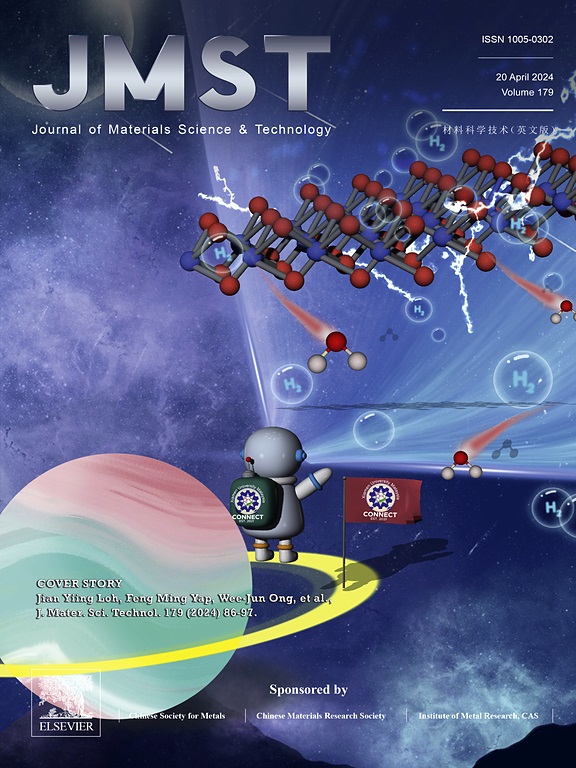Hierarchical surface configuration engineering of lithium-rich manganese-based cathode materials for high energy density Li-ion batteries
IF 11.2
1区 材料科学
Q1 MATERIALS SCIENCE, MULTIDISCIPLINARY
引用次数: 0
Abstract
Lithium-rich manganese-based cathodes (R-LNCM) are potential candidates for next-generation Li+ batteries. However, their practical applications have impeded by the substantial voltage attenuation on cycling. The irreversible evolution of oxygen triggers transition-metal (TM) migration and structural rearrangements, resulting in the voltage decay. Herein, a linkage-functionalized modification approach to tackle these challenges. The strategy involves the synchronous formation of an amorphous CuO coating, inner spinel structure, and oxygen vacancies on the surface of R-LNCM microspheres, effectively stabilizing the lattice oxygen evolution and suppressing structural distortion. Importantly, this three-in-one surface engineering approach is characterized by its environment-friendly attributes, cost-efficiency and seamless scalability. The corresponding cathode delivers a high specific capacity 298.2 mAh g−1 with initial coulombic efficiency (ICE) 95.18% at 0.1 C. The voltage decay and the capacity retention rate are 1.70 mV cycle−1 and 90.5% after 200 cycles at 1 C. The density functional theory shows that the diffusion energy barrier of Li+ in Li2MnO3 can be reduced by introducing vacancy. Moreover, the introduction of spinel structure in R-LNCM material improves the stability and diffusion ability of R-LNCM. Therefore, the novel insight and method have a potential to make a significantly contribution to the commercialization of R-LNCM for high energy density batteries.

求助全文
约1分钟内获得全文
求助全文
来源期刊

Journal of Materials Science & Technology
工程技术-材料科学:综合
CiteScore
20.00
自引率
11.00%
发文量
995
审稿时长
13 days
期刊介绍:
Journal of Materials Science & Technology strives to promote global collaboration in the field of materials science and technology. It primarily publishes original research papers, invited review articles, letters, research notes, and summaries of scientific achievements. The journal covers a wide range of materials science and technology topics, including metallic materials, inorganic nonmetallic materials, and composite materials.
 求助内容:
求助内容: 应助结果提醒方式:
应助结果提醒方式:


